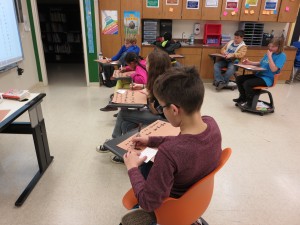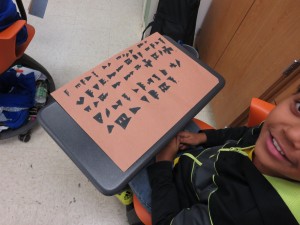In inquiry we are learning about past civilizations. This past week 6th grade explored the very first written language. This early form of language was developed by the Mesopotamian civilization in an effort to help them plant their crops, organize their possessions (which included livestock, jewelry, clothing, dwellings and slaves), and record their sacrifices to their gods. The students began by experimenting with an activity that showed just how important having a uniform written language is.
Some students were only able to communicate via pictures, which made relaying a message very difficult. In the end, our original message “I will trade you 3 cows for 1 slave” (a message that would have been important during the Mesopotamian civilization) ultimately ended up being translated to “2 very ugly people arguing!”
*Video coming soon!
After learning how important it is to have a central uniform language, students were able to learn first hand how the Mesopotamian/Sumerian language evolved over time from pictures to wedge-like symbols. Ancient Mesopotamians would make these symbols by pressing styluses made of reeds into wet clay, which would then be baked and made permanent. This early form of writing is known today as cuneiform. Although there are over 700 characters in this ancient language, the 6th graders experimented with a more simplified version. Each student created a cuneiform piece that told something important about them as individuals that they would want future generations to know if their “clay tablet” were to be discovered.








